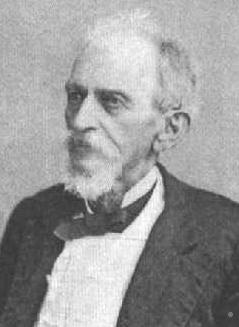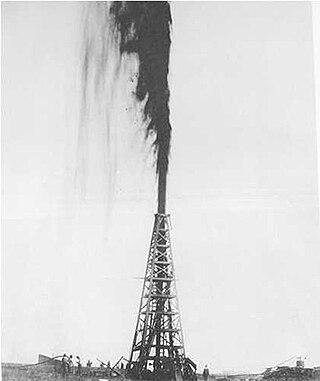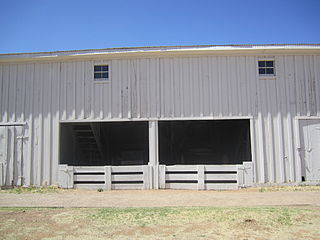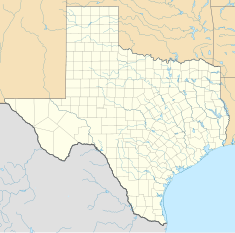
Matagorda County is a county located in the U.S. state of Texas. As of the 2020 census, the population was 36,255. Its county seat is Bay City, not to be confused with the larger Baytown in Harris and Chambers Counties. Matagorda County is named for the canebrakes that once grew along the coast.

Pasadena is a city in the U.S. state of Texas, located in Harris County. It is part of the Houston–The Woodlands–Sugar Land metropolitan area. As of the 2020 U.S. census, the city's population was 151,950, making it the twentieth most populous city in Texas and the second most populous in Harris County. The area was founded in 1893 by John H. Burnett of Galveston, who named the area after Pasadena, California, because of the perceived lush vegetation.

Indianola is a ghost town located on Matagorda Bay in Calhoun County, Texas, United States. The community, once the county seat of Calhoun County, is a part of the Victoria, Texas, Metropolitan Statistical Area. In 1875, the city had a population of 5,000, but on September 15 of that year, a powerful hurricane struck, killing between 150 and 300 and almost destroying the town. Indianola was rebuilt, only to be wiped out on August 19, 1886, by another intense hurricane followed by a fire. Indianola was designated a Recorded Texas Historic Landmark in 1963, marker number 2642.

Matagorda Bay is a large Gulf of Mexico bay on the Texas coast, lying in Calhoun and Matagorda counties and located approximately 80 miles (130 km) northeast of Corpus Christi, 143 miles (230 km) east-southeast of San Antonio, 108 miles (174 km) south-southwest of Houston, and 167 miles (269 km) south-southeast of Austin. It is one of seven major estuaries along the Gulf Coast of Texas and serves as the mouth of numerous streams, most notably the Lavaca and Colorado Rivers. The Texas seaport of Port Lavaca is located on the system's northwestern extension of Lavaca Bay. The city of Palacios is found on northeastern extension of Tres Palacios Bay, and Port O'Connor is located on the southwestern tip of the main bay's shore. The ghost town of Indianola, which was a major port before it was destroyed by two hurricanes in the late 19th century, is also found on the bay.

Oak Alley Plantation is a historic plantation located on the west bank of the Mississippi River, in the community of Vacherie, St. James Parish, Louisiana, U.S. Oak Alley is named for its distinguishing visual feature, an alley or canopied path, created by a double row of southern live oak trees about 800 feet long, planted in the early 18th century — long before the present house was built. The allée or tree avenue runs between the home and the River. The property was designated a National Historic Landmark for its architecture and landscaping, and for the agricultural innovation of grafting pecan trees, performed there in 1846–47 by a gardener. It was first known as Bon Séjour.

The economy of the State of Texas is the second largest by GDP in the United States after that of California. It has a gross state product of $2.564 trillion as of 2023. In 2022, Texas led the nation with the most companies in the Fortune 500 with 53 in total. As of 2023, Texas grossed more than $440 billion a year in exports, more than double the next highest state California.

Ashbel Smith was a slave owner, pioneer physician, diplomat, and official of the Republic of Texas, Confederate officer and first President of the Board of Regents of the University of Texas. Smith helped lead efforts to keep Texas a Republic and slave state.
Hawkinsville was a community in Matagorda County, Texas, United States. In 2018, there were a few homes nearby, several businesses one mile to the south, and the name appeared on maps, but one source refers to the place in the past tense, while a second source states that the town disappeared in the 1950s. The town site is between Cedar Lane and Sargent.

Caney Creek (Matagorda Bay) is a river in Texas that begins northwest of Wharton, flows generally southeast, and empties into the Gulf of Mexico near Sargent. The major waterway to the west is the Colorado River while the next major waterway to the east is the San Bernard River.

For a period of over 7000 years, humans have inhabited the Galveston Bay Area in what is now the United States. Through their history the communities in the region have been influenced by the once competing sister cities of Houston and Galveston, but still have their own distinct history. Though never truly a single, unified community, the histories of the Bay Area communities have had many common threads.

The Texas oil boom, sometimes called the gusher age, was a period of dramatic change and economic growth in the U.S. state of Texas during the early 20th century that began with the discovery of a large petroleum reserve near Beaumont, Texas. The find was unprecedented in its size (worldwide) and ushered in an age of rapid regional development and industrialization that has few parallels in U.S. history. Texas quickly became one of the leading oil-producing states in the U.S., along with Oklahoma and California; soon the nation overtook the Russian Empire as the top producer of petroleum. By 1940 Texas had come to dominate U.S. production. Some historians even define the beginning of the world's Oil Age as the beginning of this era in Texas.
The Beauford H. Jester Complex, formerly the Jester State Prison Farm, refers to a complex of Texas Department of Criminal Justice prisons for men in unincorporated Fort Bend County, Texas, United States. Individually they are Jester I Unit, Carol Vance Unit, Jester III Unit, and Wayne Scott Unit.
Hedwigs Hill is an unincorporated farming and ranching community, established in 1853, just off U.S. Highway 87, located 5 miles (8.0 km) south of Art in southern Mason County, Texas, United States.

The Cane Belt Railroad was chartered in the U.S. state of Texas in 1898. Formed by a group of businessmen from Eagle Lake, the short-line railroad was intended to bring the area's sugarcane to market. In 1902 a disagreement between two of the railroad's chief promoters proved deadly. By 1904 the line was in operation from Sealy to Matagorda on the Gulf of Mexico. That year the company's stock was bought by the Atchison, Topeka and Santa Fe Railway and the line continued operations under lease to the Gulf, Colorado and Santa Fe Railway starting in 1905. By the 1920s, the local sugarcane industry collapsed but the railroad was saved by the discovery of two nearby sulphur mines. In 1948, the Cane Belt was merged into the Gulf, Colorado and Santa Fe Railway. In the 1990s most of the original line was abandoned after the last sulphur mine closed. By 2013, only a small portion of the line south of Bay City was operating as part of the BNSF Railway.

Spanish immigration to Hawaii began in 1907 when the Hawaiian government and the Hawaiian Sugar Planters' Association (HSPA) decided to supplement their ongoing importation of Portuguese workers to Hawaii with workers recruited from Spain. Importation of Spanish laborers, along with their families, continued until 1913, at which time more than 9,000 Spanish immigrants had been brought in, most recruited to work primarily on the Hawaiian sugarcane plantations.
William B. Slaughter was an American rancher, cattle driver, banker and county judge. Born into a ranching family, he drove cattle and ranched in New Mexico before acquired a ranch in Sherman County, Texas. He founded local banks in Texas and New Mexico, and he was tried but acquitted on suspicion of faulty loans. He retired in San Antonio, Texas.
Colonel James Boyd Hawkins was an American planter and rancher. He moved from North Carolina to Texas in the 1840s, and he established the Hawkins Ranch, a working sugarcane plantation, operated by 101 enslaved African Americans by 1860. After the American Civil War, he replaced the slaves with paid laborers and convicts, and gradually turned his landholdings into a cattle ranch.

The U Lazy S Ranch, formerly known as the Square and Compass Ranch, is a historic ranch in Garza County, Texas, USA.
John Scharbauer was an American rancher. Born in New York, he moved to Texas in 1880 and became a large rancher in the Southwest. By the time of his death, his business empire included "operations in banking, corporate investments, oil lands, real estate and ranches which sprawled across four Texas counties and into New Mexico."
Colonel Cornelius T. Herring was an American rancher, banker and hotelier. He was the owner of up to five ranches in Texas. He was the founder of the Herring Bank. He built hotels in Vernon and Amarillo, Texas. He served as the first chairman of the West Texas Chamber of Commerce.













